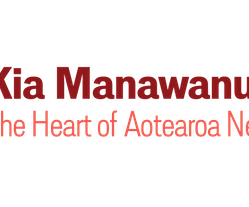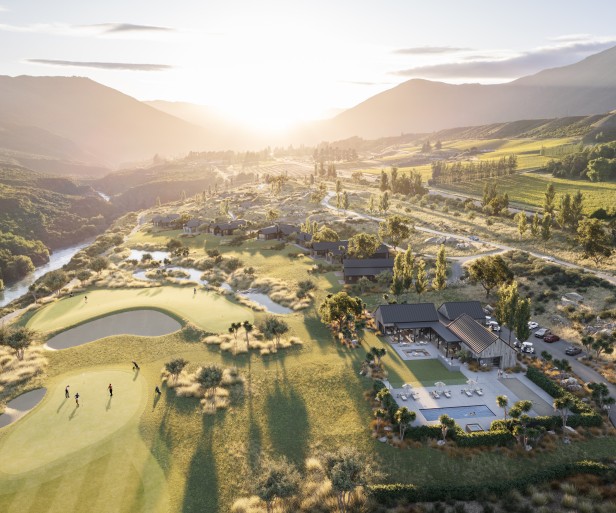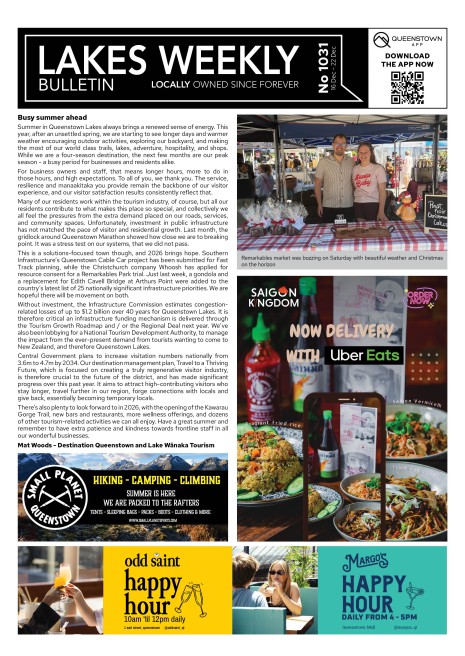Queenstown's electric future

Transpower, Aurora Energy and PowerNet are asking Queenstown residents for their views on the best way to provide a more resilient and secure electricity supply into the region for the long term.
The region’s growing population and increased focus on electrification (moving to appliances and cars that are powered by electricity rather than fossil fuels) means there’s more demand for electricity now, and there’ll be even more demand in the future.
For more than a year, the national grid operator and two electricity distribution businesses (lines companies) have been working with Queenstown Lakes District Council and other major energy users to forecast the region’s long-term future electricity needs and investigate ways to meet it.
Transpower’s Executive General Manager Grid Development Matt Webb said everyone has a shared ambition of ensuring Queenstown has electricity infrastructure that residents and visitors can rely on.
“While the transmission system has capacity and resilience to handle current demand to around 2030-2032, it’s vital to plan for what the region will need through to 2050 and beyond, taking into account new technologies and changes in electricity use.”
Aurora Energy Chief Executive Richard Fletcher said Queenstown has an ambitious vision to become the world’s most electrified destination. Transpower's transmission lines are the backbone that will support this future by ensuring the region is supplied with sufficient electricity from the national grid.
"It's important that electricity infrastructure planning for both Transpower's transmission grid as well as Aurora Energy and PowerNet’s distribution networks considers any benefits that might come from the integration of locally generated electricity and battery storage. The engagement we're doing now seeks feedback on this important area."
PowerNet manages the local Lakeland Network. PowerNet’s Acting Chief Executive David Stevens said that the consultation was a good opportunity for the local community to really understand the challenges and to find the best option for the region as a whole.
“These are big decisions to make and they’ll have a real impact on future generations,” he said. “We encourage everyone to learn about the options and have their say.”
The consultation closes on 19 September.
More information about the consultation and the four options is available on www.energisingqueenstown.co.nz
Aurora Energy to double household solar export limits to 10 kW
Aurora Energy is one of the first electricity distribution businesses in Aotearoa New Zealand to increase the limit on how much solar power households can export back to the grid.
The change is a response to strong customer growth across the Otago network and follows the Government’s plans to expand the voltage range from +/- 6 percent to +/- 10 percent. Aurora Energy’s recent smart meter data trial, along with mandated inverter voltage control, gives confidence that the export limit can be raised ahead of the Government’s increase in voltage limits.
It means that from 1 August 2025, Aurora Energy will raise its limit to allow Single Phase Domestic Connections to export up to 10 kW of electricity. The current limit on the network is 5 kW.
Chief Executive Richard Fletcher says the change represents the lines company’s move towards a smart and future-ready network that encourages greater adoption of renewable energy while still maintaining grid safety and stability.
Increasing the export limit can make the value proposition for investing in solar and battery technology more appealing to homeowners, by enabling excess domestically generated power to be exported into the network, thereby generating income.
“This change is one of the examples of Aurora Energy leading the way in enabling smarter, more sustainable energy solutions,” Fletcher says.
“By increasing solar export limits, we’re not just responding to customer demand, but showing how electricity distribution businesses can support the transition to renewable energy.”
Technical details
Export limit: Up to 10 kW per single phase domestic connection.
Voltage compliance: Voltage at the point of supply must always remain within New Zealand regulatory limits.
Inverter control: The inverter must automatically control and regulate voltage to prevent excursions beyond legislated thresholds.
Regulatory compliance: Compliance with the Electricity (Safety) Regulations 2010 and AS/NZS 4777 series standards is mandatory.
More information about the technical requirements are available on the Aurora Energy website www.auroraenergy.co.nz/get-connected/solar-and-distributed-energy









